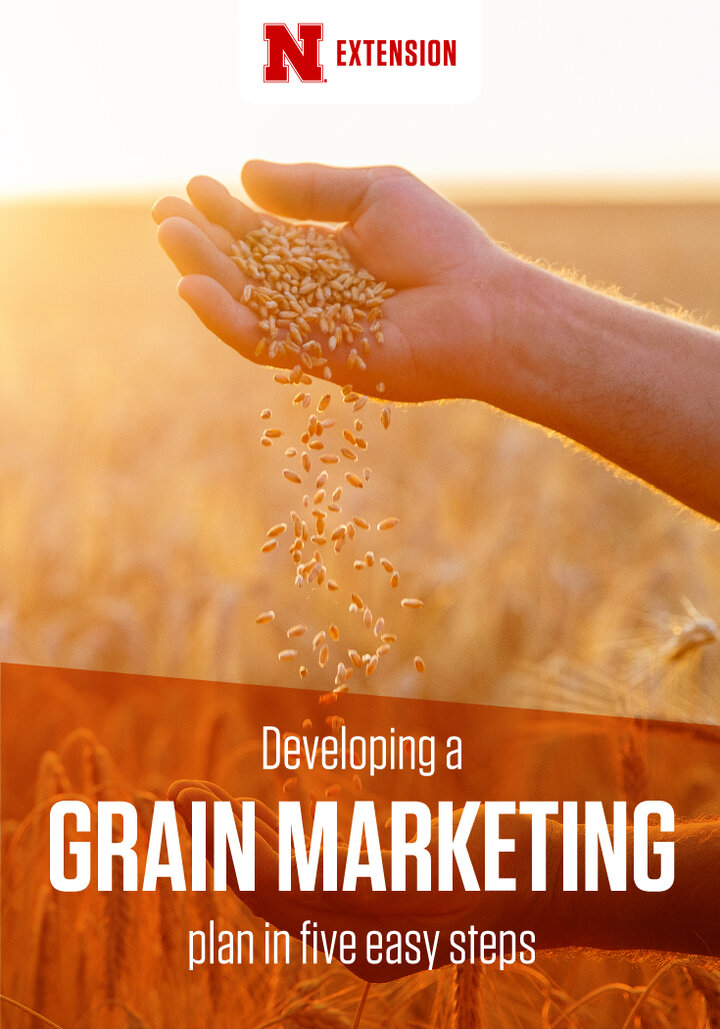If you didn’t know where to start or thought developing your own grain marketing plan was too difficult, check out these tips for writing and using a plan throughout the year to meet your goals.
1. Break the total amount you have to sell down into smaller units.
Break the total amount of grain you have to market down into smaller units. Most producers think in 1,000- or 5,000-bushel segments, depending on how much grain has to be sold.
Post-Harvest: If you are post-harvest marketing, you can only sell the grain that is unpriced in the grain bin.
Pre-Harvest: If you are pre-harvest marketing, do not sell more than you have insured. You do not have to sell any bushels before harvest. To calculate how many bushels you have insured, multiply the Actual Production History (APH) by the number of acres of the commodity you plan to plant or have planted in a given field. This gives you the expected production. Then multiply the expected production by the insurance rate.
For example, let’s say you have a 200-acre corn field with an APH of 180 bushels per acre and a 70% insurance rate. The expected production is 36,000 bushels (200 X 180 = 36,000). However, the insured amount is 25,200 bushels (36,000 X 0.70 = 25,200). The insured amount can be broken into five units, each approximately 5,000 bushels.
2. Set price targets.
The next step is to determine an average price you want to sell at and then create price targets around that average.
Let’s say the average price you want to obtain is $3.50 per bushel. If you have five equal quantities to sell, you could set price targets at $3.30, $3.40, $3.50, $3.60 and $3.70.

It is important that you set realistic price targets. Setting prices too high or too low may be detrimental to your plan. At minimum, your price targets (pre- or post-harvest) should exceed your established cash flow price.
Post-Harvest: When determining price targets after harvest, you will want to set targets above the price you could have obtained at harvest, plus any additional expenses accrued by storage. Expenses to consider are bin rental, insurance on grain in storage, and additional interest expense on operating notes.
Pre-Harvest: When setting pre-harvest price targets, you want to price grain above your cost of production. Some marketers suggest that you do not pre-price grain if you cannot break even.
3. Set sale deadlines.
If prices do not rise enough to meet your price target, you need to set sales deadlines to ensure you are proactive about pricing. Target prices and sales deadlines work together to help you make sales throughout the year.
Commodity prices typically have a defined seasonal price pattern. Setting sales deadlines that correspond with periods when prices are traditionally highest will help make marketing easier. Price patterns vary by commodity. Corn prices are typically highest in the spring (March-June,) and soybean prices are traditionally highest during the summer (June-July).
Your cash flow needs are another consideration when selecting sales deadlines. Are there certain times of the year that you need to make sales in order to make payments? Plan ahead and have this cash ready by setting sales deadlines ahead of payment dates.
4. Know your marketing tools.
There are several types of contracts you can use to sell grain. We call these marketing tools. You should work with your local elevator or broker to determine what marketing tools are available to you and what tools you should be using to achieve your price targets and sales deadlines. The common marketing tools offered by most local elevators are cash sales, forward cash contracts, basis contracts, and hedge-to-arrive (HTA) contracts. You can also work with a broker to establish hedges, puts, or calls.
5. Share your plan with someone else.
Once you have written your plan, share it with someone else. Sharing your goals with your spouse, merchandiser, or banker will help keep you accountable to your marketing goals.
Marketing plans can become more complex. However, this basic outline will help you get started. Remember: the goal of a marketing plan is to keep you on track with the goals you determined at the beginning of the crop cycle.
